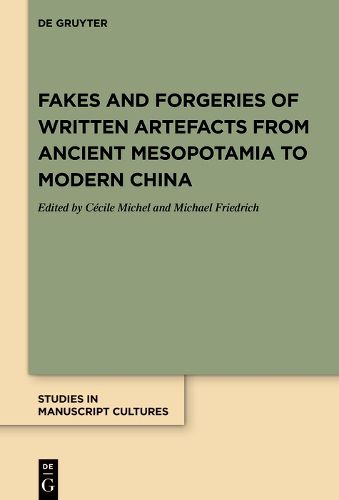Readings Newsletter
Become a Readings Member to make your shopping experience even easier.
Sign in or sign up for free!
You’re not far away from qualifying for FREE standard shipping within Australia
You’ve qualified for FREE standard shipping within Australia
The cart is loading…






This title is printed to order. This book may have been self-published. If so, we cannot guarantee the quality of the content. In the main most books will have gone through the editing process however some may not. We therefore suggest that you be aware of this before ordering this book. If in doubt check either the author or publisher’s details as we are unable to accept any returns unless they are faulty. Please contact us if you have any questions.
Fakes and forgeries are objects of fascination. This volume contains a series of thirteen articles devoted to fakes and forgeries of written artefacts from the beginnings of writing in Mesopotamia to modern China. The studies emphasise the subtle distinctions conveyed by an established vocabulary relating to the reproduction of ancient artefacts and production of artefacts claiming to be ancient: from copies, replicas and imitations to fakes and forgeries. Fakes are often a response to a demand from the public or scholarly milieu, or even both. The motives behind their production may be economic, political, religious or personal - aspiring to fame or simply playing a joke. Fakes may be revealed by combining the study of their contents, codicological, epigraphic and palaeographic analyses, and scientific investigations. However, certain famous unsolved cases still continue to defy technology today, no matter how advanced it is. Nowadays, one can find fakes in museums and private collections alike; they abound on the antique market, mixed with real artefacts that have often been looted. The scientific community’s attitude to such objects calls for ethical reflection.
$9.00 standard shipping within Australia
FREE standard shipping within Australia for orders over $100.00
Express & International shipping calculated at checkout
This title is printed to order. This book may have been self-published. If so, we cannot guarantee the quality of the content. In the main most books will have gone through the editing process however some may not. We therefore suggest that you be aware of this before ordering this book. If in doubt check either the author or publisher’s details as we are unable to accept any returns unless they are faulty. Please contact us if you have any questions.
Fakes and forgeries are objects of fascination. This volume contains a series of thirteen articles devoted to fakes and forgeries of written artefacts from the beginnings of writing in Mesopotamia to modern China. The studies emphasise the subtle distinctions conveyed by an established vocabulary relating to the reproduction of ancient artefacts and production of artefacts claiming to be ancient: from copies, replicas and imitations to fakes and forgeries. Fakes are often a response to a demand from the public or scholarly milieu, or even both. The motives behind their production may be economic, political, religious or personal - aspiring to fame or simply playing a joke. Fakes may be revealed by combining the study of their contents, codicological, epigraphic and palaeographic analyses, and scientific investigations. However, certain famous unsolved cases still continue to defy technology today, no matter how advanced it is. Nowadays, one can find fakes in museums and private collections alike; they abound on the antique market, mixed with real artefacts that have often been looted. The scientific community’s attitude to such objects calls for ethical reflection.